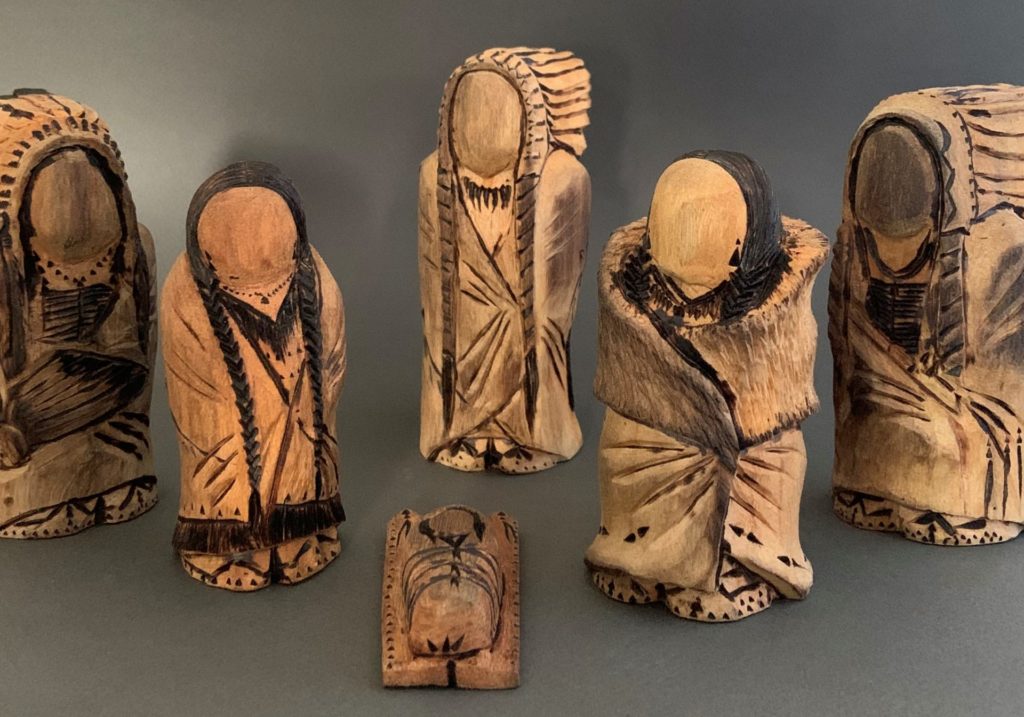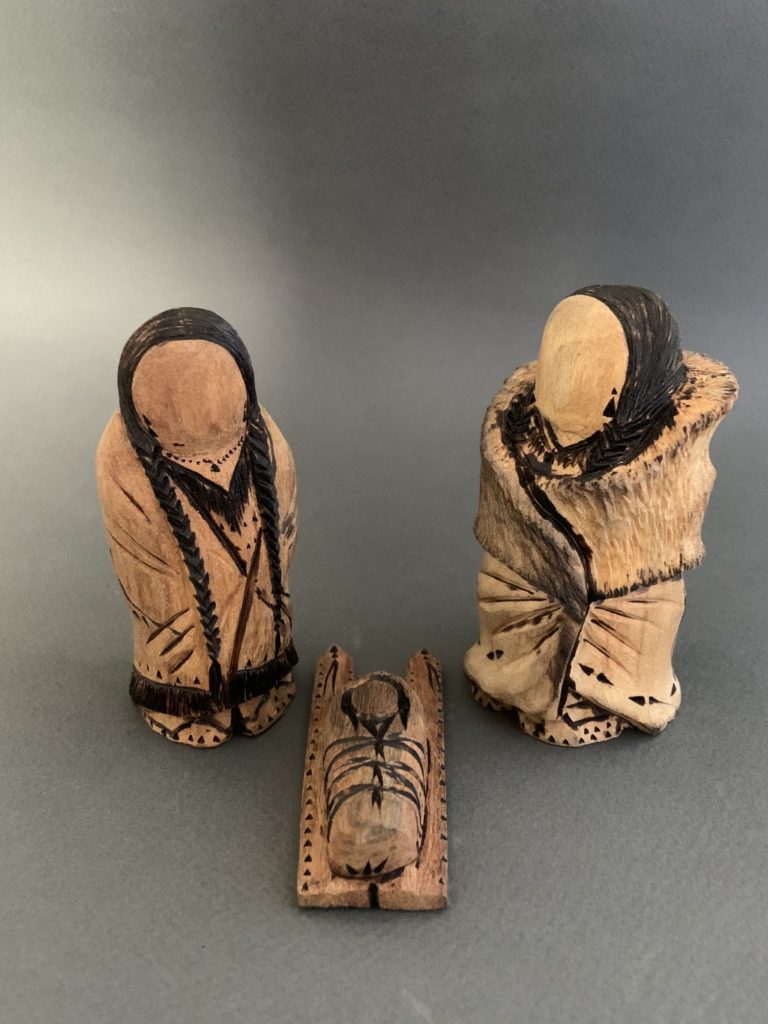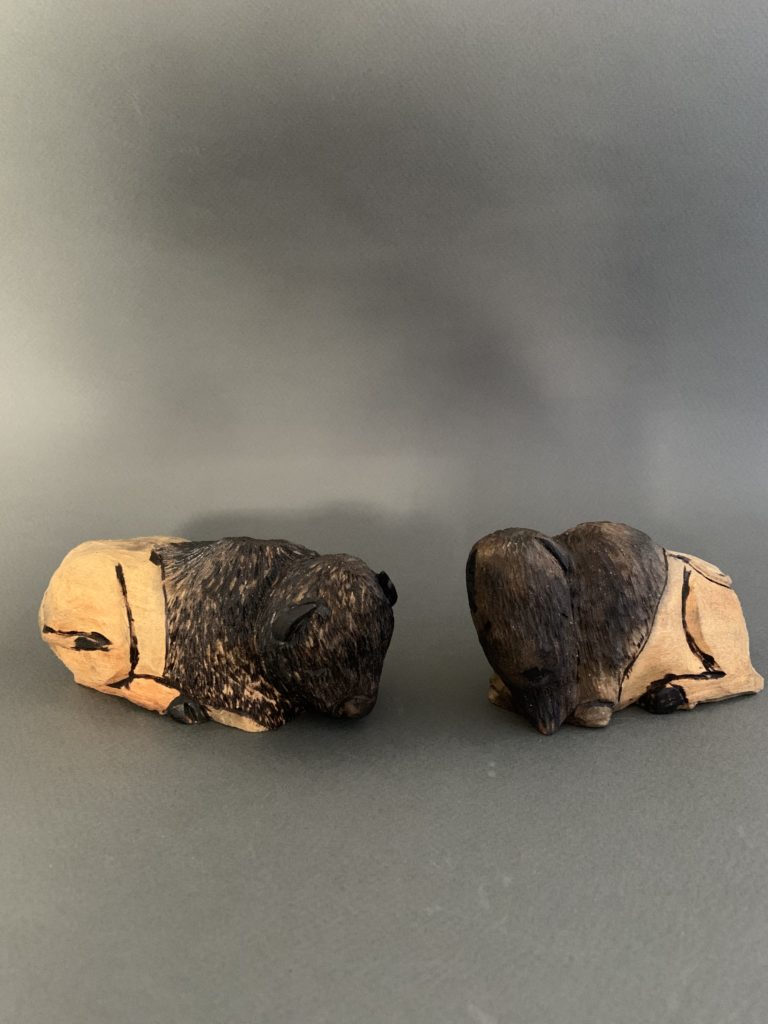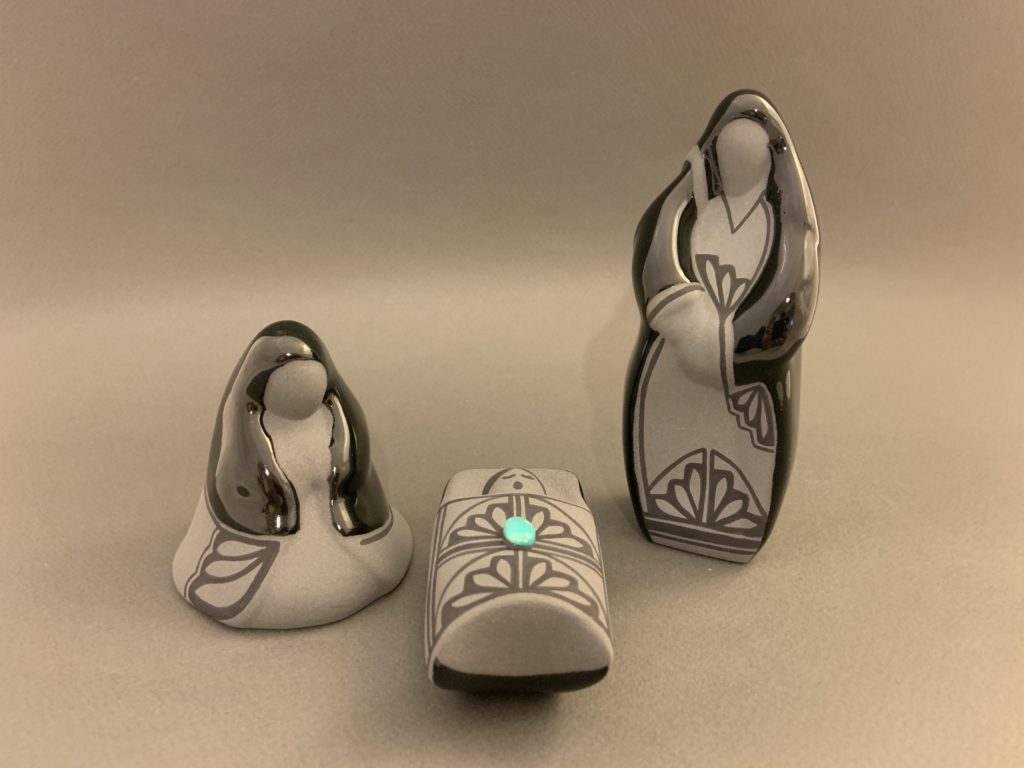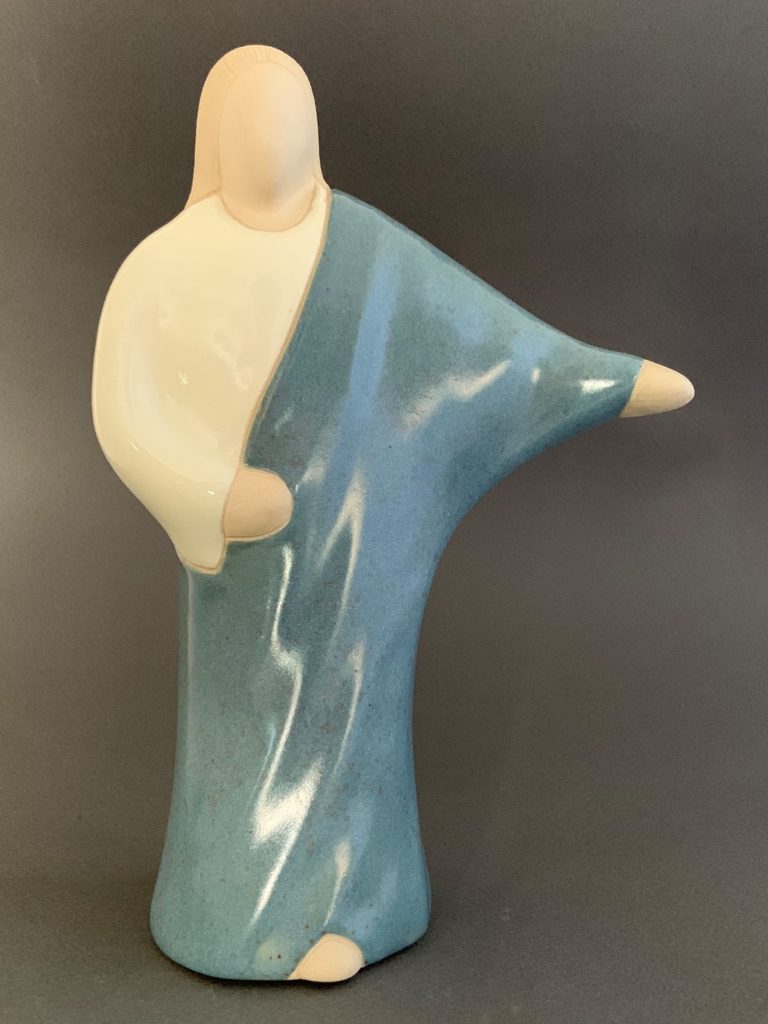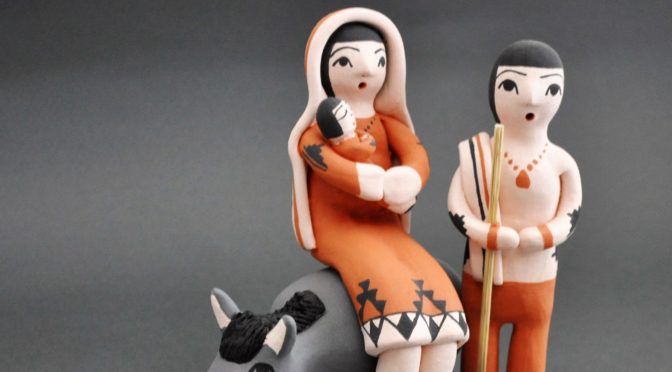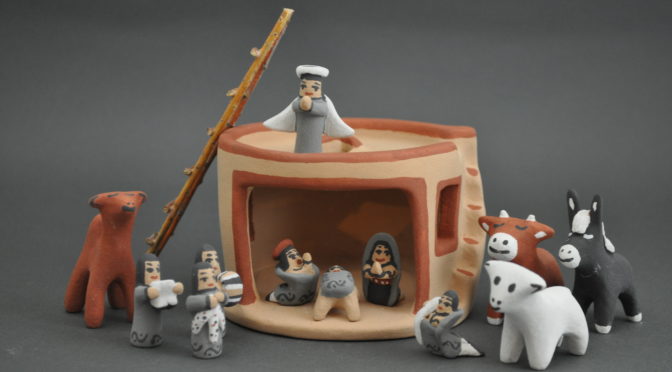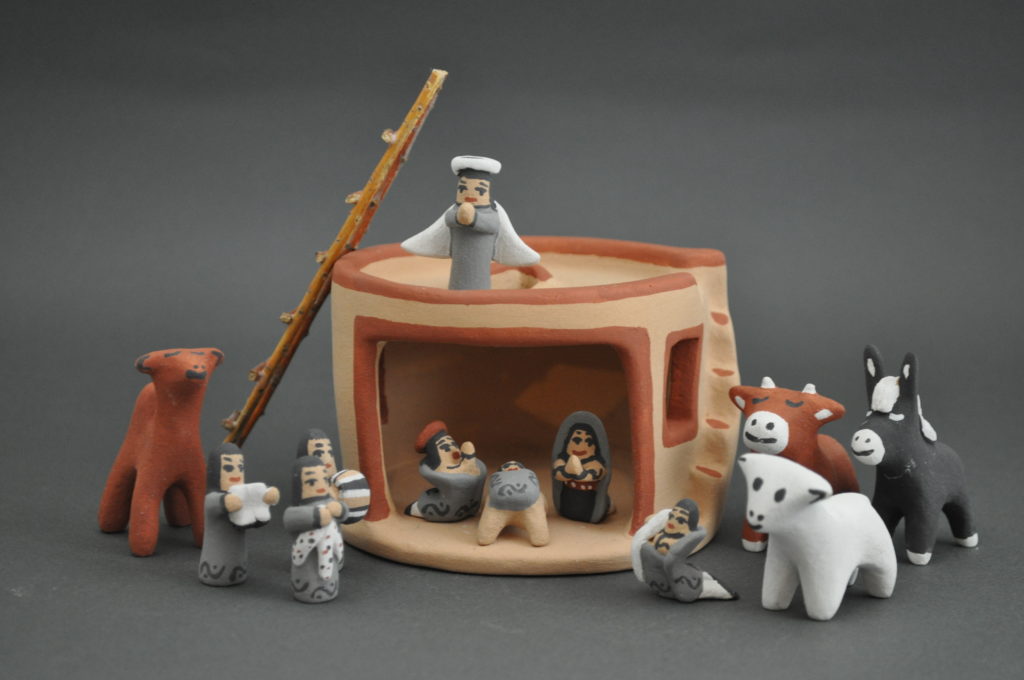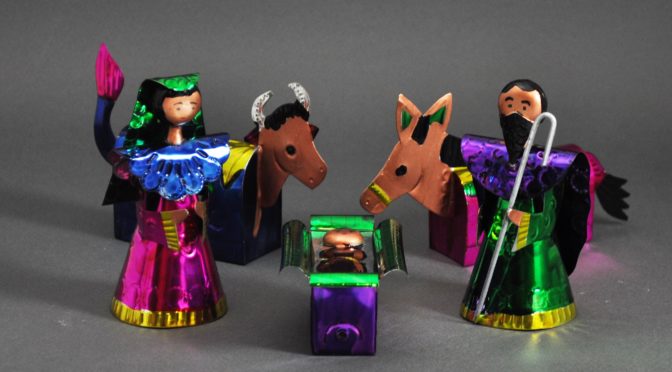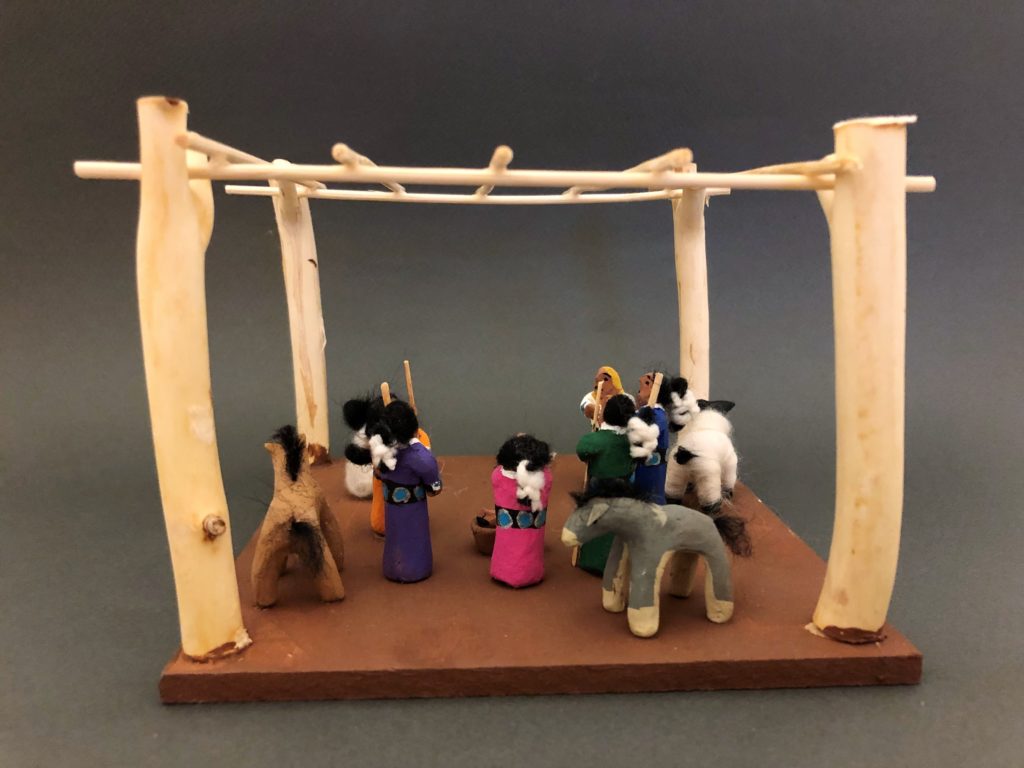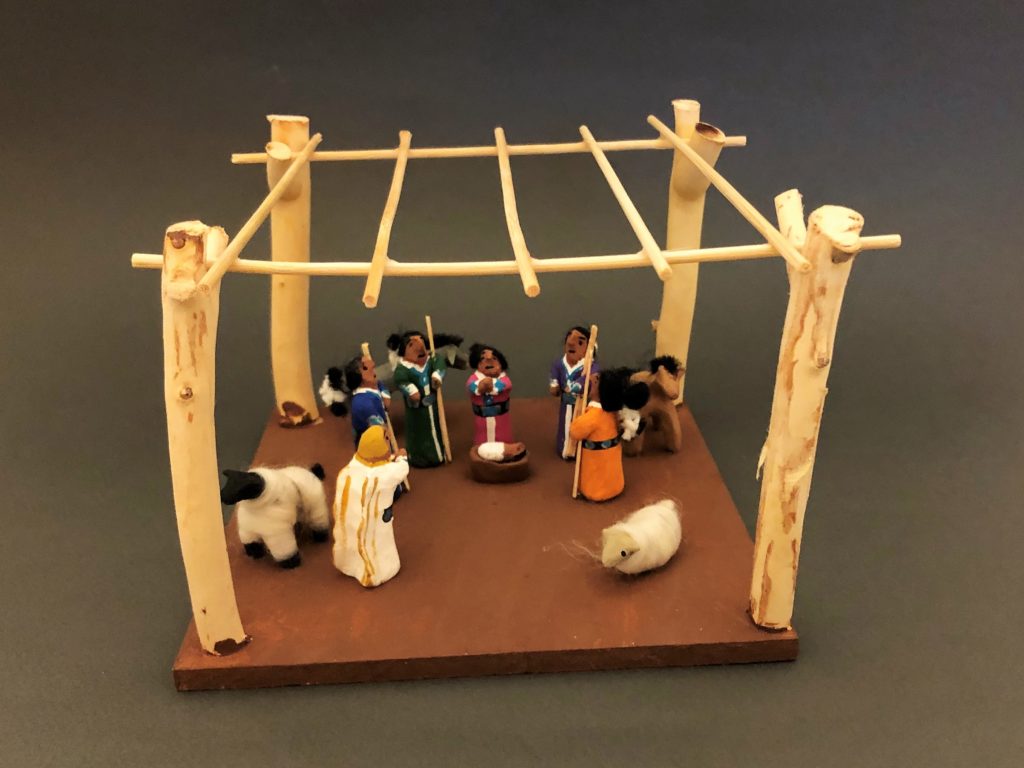This wonderful nativity was created by Leonard Yellow Horse who was born in 1971 in Chadron, Nebraska. He is a self taught artist who in 1991 started working with cottonwood root sourced from dry river beds mostly on the Pine Ridge Reservation or in the Badlands.
Leonard has a very distinctive technique he inherited from his family. He hand carves his figures and then uses a torch to create additional detail.
Of his work he says: “My work is calling from the Elders who want to be seen again, but through the roots. It’s not what I put into the root; the root has a voice and a character of its own. No two pieces are the same. Each piece is unique.”
This nativity is a great example of an artist depicting the many figures of the Nativity narrative in their own image. The Magi for instance are presented as Lakota elders. Jesus, Mary and Joseph are Lakota. And the traditional ox and donkey are replaced with buffalo.


